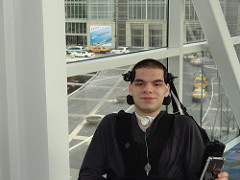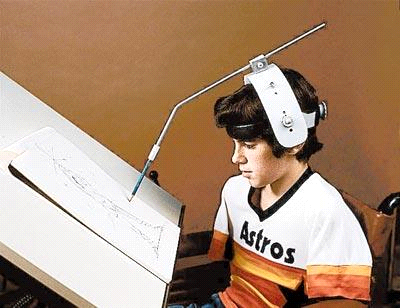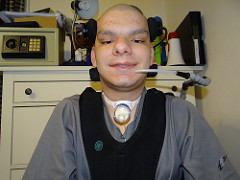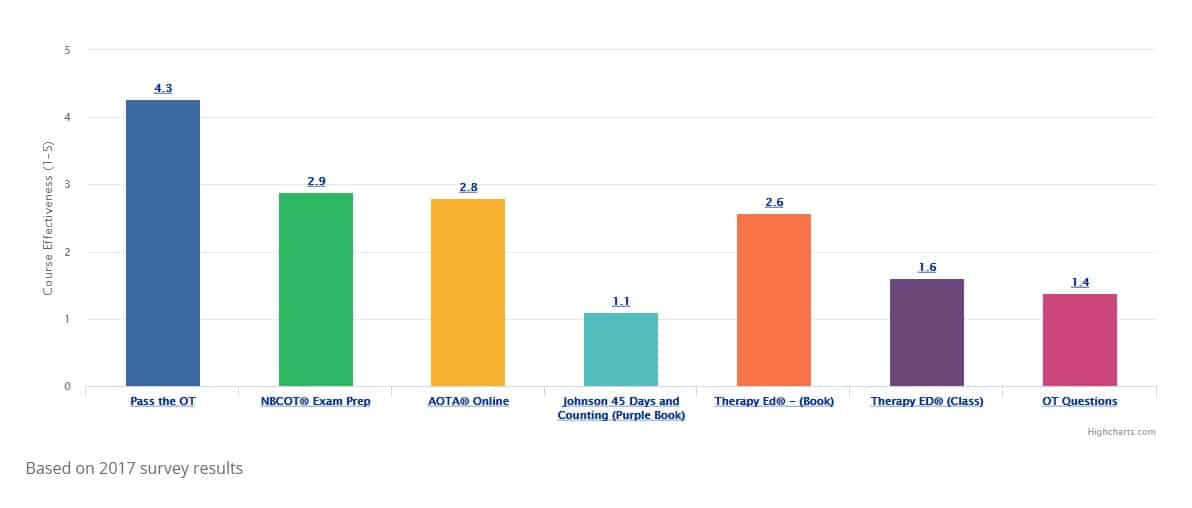Assistive Technology for People who use Wheelchairs
| Device | What it is | How it is used | Who would use it – diagnoses | Examples | Video Links | Photos |
| Head control | A device that allows switches to be mounted on or near the headrest of a wheelchair. | Switches are activated by moving the head to press the switch. | Quadriplegia due to: -spinal cord injury C4-C5 -cerebral palsy -advanced multiple sclerosis -advanced muscular dystrophy |
A man with quadriplegic cerebral palsy turns on his radio by tilting his head to the side to press a switch mounted to the side of his headrest. | A teenager with athetoid cerebral palsy uses a head switch to operate his computer. |  |
| Head pointer | A pointing device that is mounted to head gear. | The head gear for the device is worn on top of the head. The head is moved to maneuver the pointer. | Quadriplegia due to: -spinal cord injury C4-C5 -advanced multiple sclerosis -advanced muscular dystrophy |
A woman with advanced multiple sclerosis uses her head pointer to turn the pages of her book. | Boy with multiple disabilities using a head pointer to communicate with his teachers. |  |
| Sip ‘n’ Puff switch | A switch that is activated by blowing or sucking on a tube. | The mouth is used to blow through the tube for some functions or suck on the tube for other functions. | Quadriplegia due to: -spinal cord injury C1-C3 -advanced amyotro-phic lateral sclerosis |
A man with a C3 spinal cord injury uses a sip n puff interface to operate his computer. | Man with a spinal cord injury using a Jouse 2 sip n puff switch. |  |
| Track ball | A computer mouse that incur-porates a ball held in by a socket. The ball is connected to sensors within the mouse that detect its movement | The thumb or fingers are used to roll the ball to move the pointer on the computer screen. | -spinal cord injury C7-C8 -multiple sclerosis Muscular dystrophy -cerebral palsy -advanced seizure disorder -severe traumatic brain injury (TBI) |
A boy with a severe TBI uses a track ball to move the computer cursor while doing his homework. | Man with quadriplegia using a track ball on his computer. |  |
| Dual-hand-ed key-board | A keyboard with keys placed in several ergonomic positions to allow easy access to all keys. | Both hands are used to type on the keyboard. The keys are placed to allow for minimal hand and wrist movement while typing. | -spinal cord injury C7-C8 -multiple sclerosis -muscular dystrophy -severe rheumatoid arthritis |
A secretary with severe rheumatoid arthritis uses a dual-handed keyboard on her computer at work. | Testimonials about the Maltron dual and single handed keyboards. |  |





